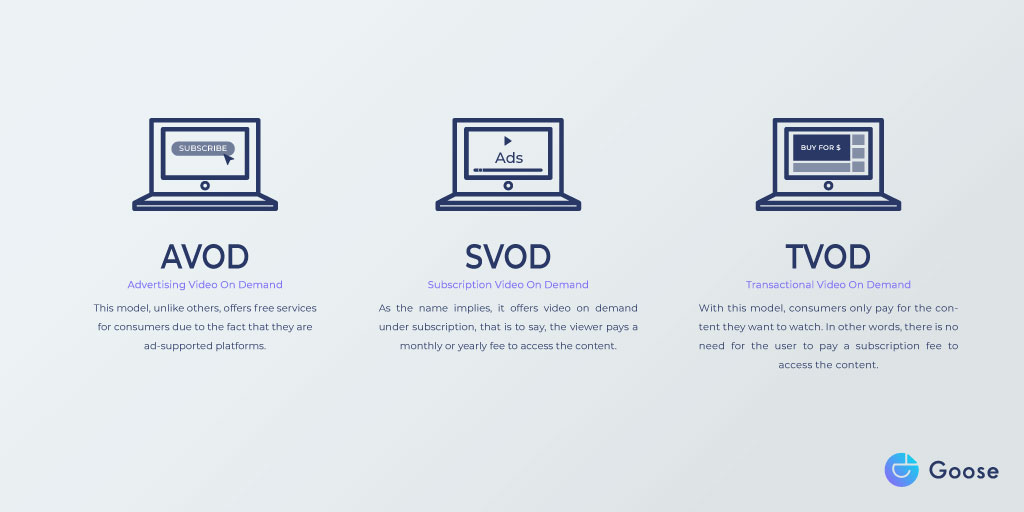How OTT apps are monetized on the market
OTT services can be monetized by using different models in which users can pay for the content or have access to it for free while being exposed to advertisements.
The outstanding point is that you are not obliged to stick to only one business model, you can use several depending on the consumer’s needs.
AVOD (Advertising Video On Demand)
This model, unlike others, offers free services for consumers due to the fact that they are ad-supported platforms. A clear example of this is the famous video platform YouTube.
SVOD (Subscription Video On Demand)
As the name suggests, it offers video on demand under subscription, it’s means the viewer pays a monthly or yearly fee to access the content.
This is the case of Netflix and Disney+, the industry giants that have known how to make their business blow up by using a SVOD model.
According to a Strategy Analytics comparison report, in the second quarter of 2020, global subscriptions exceeded 698 million dollars. Disney+ (24M), Netflix (10M), and Hulu (3.3M) represent almost 75% of all new subscribers in this second quarter among the SVOD services located.
TVOD (Transactional Video On Demand)
With this model, consumers only pay for the content they want to watch. In other words, there is no need for the user to pay a subscription fee to access the content. This option is the most suitable for live content, such as concerts, football matches, or content that will only be available for a limited time. Examples of TVOD include Apple’s and Xbox’s services, which have a wide variety of content to rent or sell.

Which monetization model to choose
As we have already mentioned, choosing the right business model determines the success for your company. That’s why you must previously assess your objectives and possibilities in order to choose between one model or the other.
Piplsay polled 27,800 Americans on their streaming trends and discovered that 82% is watching content over OTT platforms, with 31% using a mix of premium/paid and free services, 19% ad-free paid platforms, 18% paid AVOD, and 14% free AVOD.
If you want to reach a wider audience and offer them free access to your content, maybe you should use an AVOD model. But keep in mind that your income base will be the ads that, most of the time, do not like the user. If you have independent content that can be paid individually, like movies, sport events and concerts, you could use a TVOD model. On the other hand, if you have exclusive content of great quality and worthy of a subscription, like Netflix, you should monetize it with a SVOD model.
Now you know all the different models available on the market. Are you ready to be a Live TV operator? Goose offers you a 14-day free trial for you to test it and analyze the different monetization possibilities.